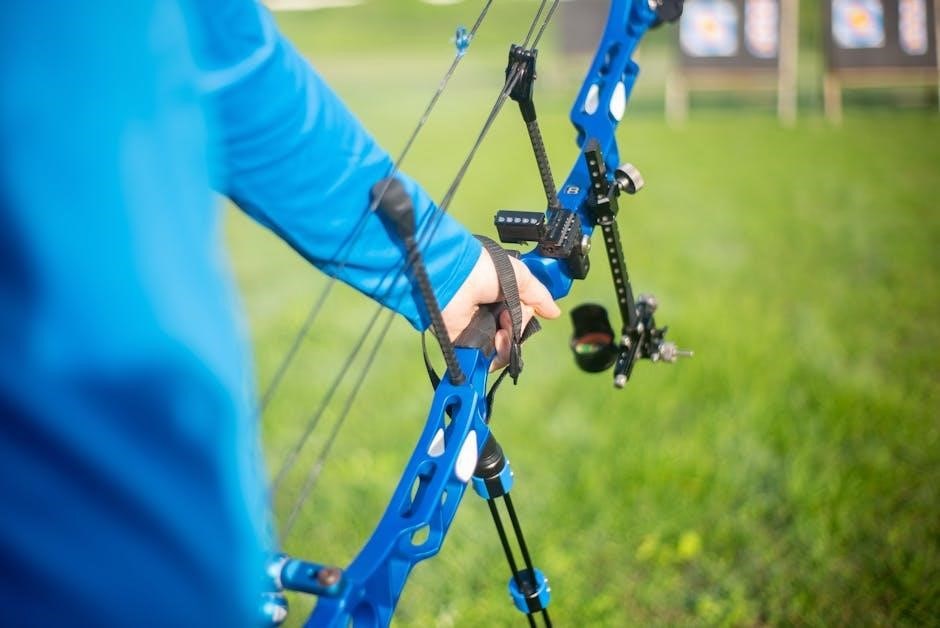Sight Singing Exercises: A Comprehensive Guide
Embark on a musical journey! Uncover resources for honing your sight-singing prowess. Download free PDFs brimming with exercises tailored for all levels. Explore melodies designed for quick classroom sight-reading and comprehensive courses featuring hundreds of melodies. Elevate your musicianship today!
Understanding Sight Singing
Sight-singing is a fundamental skill for any musician, enabling the performance of unfamiliar musical notation. It’s the art of transforming written symbols into audible melodies, relying on a blend of musical knowledge and aural perception. At its core, sight-singing involves instantly recognizing and producing pitches and rhythms from a score.
The process requires understanding key signatures, scales, intervals, and rhythmic patterns. Developing this skill enhances a musician’s overall understanding of music theory and improves their ability to learn and perform new pieces quickly. Sight-singing is not merely about hitting the right notes; it’s about internalizing the music’s structure and conveying its expressive qualities.

Effective sight-singing demands a solid foundation in music fundamentals, consistent practice, and a keen ear for musical relationships. It’s a skill that benefits singers, instrumentalists, and composers, fostering a deeper connection with the language of music. Many musical passages include rhythms, melodies, and chord progressions.
The Importance of Sight Singing Skills
Sight-singing skills are paramount for any musician, offering numerous benefits that extend far beyond the ability to read music. Proficiency in sight-singing accelerates the learning process, enabling musicians to grasp new pieces quickly and efficiently. It fosters independence, allowing individuals to learn and perform music without relying solely on rote memorization or external guidance. A strong foundation in sight-singing cultivates a deeper understanding of music theory, enhancing the ability to analyze and interpret complex scores.
Furthermore, sight-singing improves a musician’s aural skills, sharpening their ability to recognize intervals, chords, and melodies by ear. This heightened aural awareness translates to better intonation, rhythm, and overall musical expression. For singers, sight-singing is crucial for choral participation, enabling them to blend seamlessly within an ensemble and contribute to the overall sound.
Moreover, sight-singing empowers musicians to explore a wider range of repertoire, opening doors to new musical experiences and collaborations; Dr. Sanders composes musical exercises specific for the needs of all kinds of choirs.
Basic Elements of Sight Singing
Sight-singing involves several fundamental elements that must be mastered to achieve proficiency. Rhythm is a cornerstone, requiring a solid understanding of time signatures, note values, and rests. Accurate pitch recognition is equally crucial, demanding the ability to identify and reproduce notes correctly. A familiarity with scales and key signatures is essential for navigating different musical contexts. Intervals, the distance between two notes, must be recognized and sung accurately, and the student can learn to hear and sing a melody line, simply by reading the notes.
Solfège, a system of assigning syllables to notes, can be a valuable tool for developing pitch and interval recognition. Understanding musical notation, including clefs, accidentals, and dynamics, is also necessary for interpreting the written score. Count singing can help you understand where you are in time in a piece of music. Furthermore, consistent practice and ear training are vital for improving sight-singing abilities.
These elements, when combined, form the foundation for successful sight-singing and unlock a deeper appreciation of music. The melodies for sight-reading bonanzas came about because I couldn’t find enough materials that would be quick and easy enough to sight-read in class.
Rhythm Exercises for Sight Singing
Mastering rhythm is paramount in sight-singing. Begin with basic exercises focusing on whole, half, quarter, and eighth notes, ensuring precise execution of each duration. Gradually introduce dotted notes and rests to enhance rhythmic complexity. Syncopation exercises, incorporating ties and off-beat accents, are crucial for developing rhythmic flexibility. Explore various time signatures like 3/4, 6/8, and compound meters to broaden your rhythmic understanding.
Utilize a metronome to maintain a steady tempo and improve your internal clock. Practice clapping or tapping rhythms independently before singing them, reinforcing your rhythmic accuracy. Incorporate count singing, vocalizing the beats and subdivisions, to internalize the rhythmic patterns. Rhythm Readiness pages at the beginning of each unit are designed to be spoken, clapped, tapped, or sung on a pitch.
Progress to more challenging exercises involving mixed rhythms and complex time signatures. Remember, consistent practice is key to developing a strong rhythmic foundation, essential for confident and accurate sight-singing. There are rhythm exercises on elementary school level. The exercises should be sung using the syllables and hand.
Pitch Recognition Exercises
Accurate pitch recognition is fundamental to successful sight-singing. Start with simple exercises focusing on stepwise motion within a scale, gradually expanding to include larger intervals. Utilize solfège syllables (do, re, mi, fa, sol, la, ti) to associate specific pitches with their corresponding sounds. Practice singing scales and arpeggios in various keys to develop a strong sense of tonal center.
Engage in interval training, identifying and singing intervals both ascending and descending. Focus on common intervals like major and minor seconds, thirds, fifths, and octaves. Incorporate melodic dictation exercises, where you listen to a melody and transcribe it, to improve your aural skills. Use a piano or other instrument to check your accuracy and reinforce your pitch memory.
Sing melodies in different registers to expand your vocal range and improve pitch control. Practice sight-singing exercises that begin and end on the tonic (do) to establish a strong tonal foundation. Remember, consistent practice and focused listening are essential for developing accurate pitch recognition skills. Work hard and become the best you can be.
Solfège and Sight Singing
Solfège, a system of associating syllables with musical pitches, is an invaluable tool for sight-singing. By assigning syllables like “do,” “re,” and “mi” to notes within a scale, solfège provides a framework for understanding and internalizing melodic relationships. This method, undeniably the oldest and most recognized sight-reading approach, enhances your ability to hear and sing melodies by simply reading the notes.
Utilize Curwen hand symbols alongside solfège to further solidify pitch associations. Practice exercises that incorporate both syllables and hand signs, reinforcing the connection between visual notation, aural perception, and physical gesture; Begin with simple melodies consisting of stepwise motion and gradually introduce larger intervals and more complex rhythms.
Explore different solfège systems, such as movable-do and fixed-do, to determine which approach best suits your learning style. Movable-do solfège, where “do” always represents the tonic of the key, is particularly useful for sight-singing in various keys. Remember, consistent practice with solfège will significantly improve your sight-singing accuracy and musical understanding. Great work to practice your sight singing!
Interval Training in Sight Singing
Interval training is crucial for developing accurate sight-singing skills. Recognizing and singing intervals – the distance between two notes – allows you to navigate melodies with greater confidence and precision. Start by familiarizing yourself with basic intervals like major and minor seconds, thirds, fourths, fifths, and octaves. Use online resources or free PDF exercises to practice identifying intervals both visually and aurally.

Focus on singing intervals in isolation before incorporating them into melodic phrases. Begin with ascending intervals, then progress to descending intervals. Pay close attention to the characteristic sound of each interval and try to associate it with familiar melodies. For example, the beginning of “Here Comes the Bride” features a perfect fourth.

Utilize sight-singing materials that emphasize specific intervals. Practice melodies containing leaps of a fifth, for instance, and analyze the context in which these leaps occur. Gradually increase the complexity of the exercises by introducing compound intervals and altered intervals. Remember to maintain a steady tempo and focus on accurate pitch production. Regular interval training will enhance your overall sight-singing ability and musicality. Work hard and become the best you can be!
Scales and Key Signatures in Sight Singing
Understanding scales and key signatures is paramount for successful sight-singing. Scales provide the melodic framework upon which melodies are built, while key signatures indicate the tonal center and accidentals present in a piece. Mastering scales allows you to predict melodic movement and anticipate upcoming notes. Begin by practicing major and minor scales in various keys, both ascending and descending.
Focus on maintaining accurate intonation and a steady tempo. Pay attention to the specific intervals within each scale, such as the whole and half steps in major scales or the characteristic intervals in minor scales. Use online resources or free PDF exercises to reinforce your knowledge of scales. Next, familiarize yourself with key signatures and their corresponding scales.
Learn to quickly identify the key of a piece by recognizing its key signature. Practice sight-singing exercises that focus on specific keys, paying close attention to accidentals and their impact on melodic lines. Utilize materials that progressively introduce more complex key signatures. Incorporate scale practice into your daily routine to improve your overall sight-singing proficiency. Work hard and become the best you can be!
Sight Singing Resources: Free PDFs and Online Tools
Unlock a world of free sight-singing resources! Numerous websites and repositories offer downloadable PDFs packed with exercises for every skill level. From basic melodic patterns to complex choral excerpts, these PDFs provide a wealth of material for practice and improvement. Look for collections specifically designed for sight-singing, often featuring sequential exercises that gradually increase in difficulty.
Explore online tools that generate customized sight-reading examples. These platforms allow you to specify parameters such as key signature, time signature, and rhythmic complexity, creating personalized exercises tailored to your needs. Many online tools also provide immediate feedback on your performance, helping you identify areas for improvement; Consider exploring resources with indexing and categorization of leaps.
Some websites offer free sight-singing music for choirs, composed by experienced musicians. These resources often include exercises suitable for both beginning and advanced ensembles. Take advantage of these readily available tools to enhance your sight-singing abilities and expand your musical horizons. Incorporate these materials into your practice routine and witness a significant improvement in your sight-reading skills.
Kodály Method for Sight Singing
The Kodály method, a renowned approach to music education, places significant emphasis on sight-singing as a foundational skill. Rooted in folk music and a child-developmental approach, it uses a system of movable-do solfège, rhythmic syllables, and hand signs to internalize musical concepts. Central to the Kodály method are curated exercises that progressively develop aural skills and sight-reading abilities. These exercises often begin with simple melodic patterns and rhythms, gradually introducing more complex elements as the student progresses.
Exercises designed around the Kodály method often utilize pentatonic scales and simple intervals, fostering a strong sense of tonality and melodic direction. The use of hand signs reinforces the association between pitch and physical gesture, aiding in memorization and internalization. Rhythmic syllables, such as “ta” and “ti-ti,” provide a clear and consistent framework for understanding rhythmic durations and patterns.
Many resources offer free PDFs containing Kodály-inspired sight-singing exercises. These materials often include a systematic progression of exercises designed to build a solid foundation in music literacy. By consistently practicing with these exercises, students can develop strong sight-singing skills and a deep understanding of musical structure.
Advanced Sight Singing Techniques
Elevating your sight-singing skills beyond the basics requires mastering advanced techniques that tackle complex musical challenges. These techniques involve navigating intricate rhythms, dissonant harmonies, and less common key signatures. One crucial aspect is developing a strong understanding of chromaticism and modulation. Exercises focusing on chromatic scales, altered chords, and sudden key changes are essential for honing this skill.
Another advanced technique involves singing melodies with wide leaps and unpredictable contours. These exercises challenge your ability to quickly identify intervals and maintain tonal awareness. Practicing sight-singing examples in various clefs, such as alto or tenor clef, can also broaden your musical perspective and improve your overall sight-reading proficiency.

Furthermore, mastering polyphonic sight-singing, where you sing one part while hearing other independent lines, is a significant accomplishment. Resources containing advanced sight-singing exercises, often available as free PDFs, can provide targeted practice in these areas. These exercises often include excerpts from challenging choral works or complex instrumental pieces. Consistent practice with these materials will equip you with the skills to tackle even the most demanding sight-singing tasks.
Sight Singing for Choirs
Sight-singing is a cornerstone of choral excellence, enabling choirs to learn new music efficiently and perform with confidence. Regular sight-singing exercises build individual musicianship and foster ensemble cohesion. Dr. Sanders composes specific exercises tailored to various choir levels, from beginner ensembles to advanced groups. These exercises, often available as free PDFs, provide valuable resources for choral directors.
Effective sight-singing practice for choirs involves incorporating a variety of exercises that address rhythmic accuracy, pitch recognition, and harmonic awareness. Start with simple unison exercises to establish a solid foundation, then gradually introduce more complex part-singing. Utilize solfège syllables to reinforce pitch relationships and encourage accurate intonation. Focus on exercises that emphasize common choral challenges, such as navigating accidentals and maintaining consistent vowel sounds.
Furthermore, integrating sight-singing into rehearsals enhances the choir’s ability to learn new repertoire quickly. Encourage singers to actively participate in the sight-reading process, fostering a sense of shared responsibility and musical ownership. By consistently incorporating sight-singing into the choral curriculum, directors can cultivate a confident and musically literate ensemble capable of tackling a wide range of repertoire.
Practical Sight Singing Exercises
Practical sight-singing exercises are the key to developing confident and proficient musicians. Start with simple melodies in major keys, focusing on stepwise motion and common rhythmic patterns. Utilize resources like free PDF exercises to build a solid foundation. Begin by clapping or chanting the rhythm before singing the pitches, ensuring rhythmic accuracy.
Progress to exercises involving intervals, scales, and arpeggios. Incorporate solfège syllables (do, re, mi, etc.) to internalize pitch relationships and improve intonation. Practice sight-singing melodies in different clefs to enhance versatility. Use a metronome to maintain a steady tempo and develop rhythmic stability. Gradually increase the difficulty of the exercises, introducing more complex rhythms, intervals, and key signatures.
Regular practice is essential for improving sight-singing skills. Set aside dedicated time each day to work through exercises. Utilize online tools and resources to generate unlimited sight-reading examples. Focus on accuracy and musicality, paying attention to dynamics and phrasing. By consistently engaging in practical sight-singing exercises, you can develop the skills necessary to confidently tackle any musical score.
